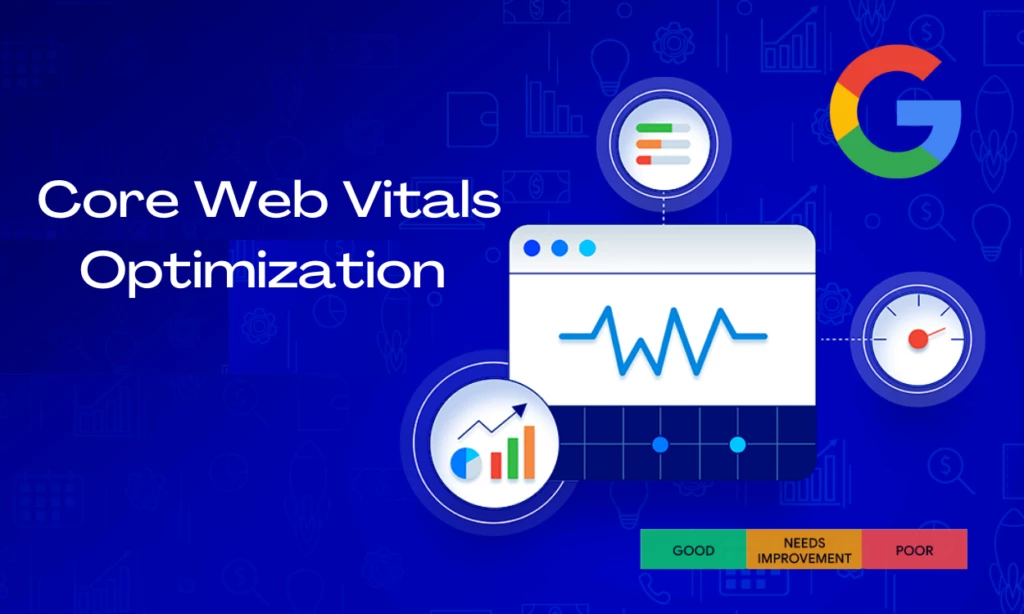In the ever-evolving world of search engine optimization (SEO), staying up to date with the latest Google algorithm updates and ranking factors is crucial for maintaining and improving your website’s search engine performance. In 2020, Google introduced Core Web Vitals as a new set of metrics to evaluate user experience on the web. In this blog post, we’ll explore the significance of Core Web Vitals and their impact on SEO.
What Are Core Web Vitals?

Core Web Vitals are a set of specific, user-centered metrics that measure the quality of the user experience provided by a web page. These metrics focus on three key aspects:
- Loading Performance (Largest Contentful Paint – LCP): This metric measures how long it takes for the largest content element on a web page to become visible. It evaluates the loading speed of the main content, emphasizing the importance of fast loading times.
- Interactivity (First Input Delay – FID): FID measures the time it takes for a web page to become interactive and responsive to user input, such as clicks or taps. It reflects the website’s responsiveness and how quickly users can interact with it.
- Visual Stability (Cumulative Layout Shift – CLS): CLS quantifies the visual stability of a web page by assessing unexpected layout shifts. It takes into account elements that move on the page after loading, potentially causing frustration for users.
Why Core Web Vitals Matter for SEO

The introduction of Core Web Vitals into Google’s ranking factors underscores the search engine’s commitment to providing users with a positive web experience. As a result, these metrics have a direct impact on your website’s SEO in several ways:
- Improved User Experience: Google’s primary goal is to deliver the best possible experience to its users. Websites that prioritize Core Web Vitals tend to offer faster loading times, quicker interactivity, and greater visual stability, resulting in a better overall user experience.
- Higher Rankings: Google has made it clear that websites that meet Core Web Vitals standards are more likely to rank higher in search results. If your website provides an excellent user experience, you stand a better chance of outperforming competitors in the search rankings.
- Lower Bounce Rates: Websites with fast loading times and responsive designs typically have lower bounce rates. A lower bounce rate is a positive signal to search engines, indicating that users are finding your content engaging and relevant.
- Improved Click-Through Rates (CTR): When users experience a smooth and speedy browsing experience, they are more likely to click through to other pages on your website. This can result in higher CTR, which can positively impact your search engine rankings.
- Enhanced Mobile SEO: As mobile users continue to grow, Core Web Vitals play a crucial role in mobile SEO. Websites that are mobile-responsive and perform well on mobile devices are more likely to rank higher in mobile search results.
How to Optimize for Core Web Vitals

Optimizing for Core Web Vitals may require some technical adjustments to your website. Here are some steps to consider:
- Minimize JavaScript and CSS: Reduce unnecessary JavaScript and CSS to enhance loading performance and interactivity.
- Optimize Images and Videos: Compress and optimize media files to reduce their impact on loading times.
- Leverage Browser Caching: Utilize browser caching to store static resources locally, reducing the need to reload them with each visit.
- Use Content Delivery Networks (CDNs): CDNs distribute your website’s content across multiple servers, improving loading times for users worldwide.
- Avoid Layout Shifts: Carefully manage the layout of your web pages to prevent unexpected layout shifts.
- Test and Monitor: Regularly test your website’s performance using tools like Google PageSpeed Insights and Lighthouse. Continuously monitor Core Web Vitals to identify and address issues.
Conclusion
Core Web Vitals have become a fundamental aspect of SEO, reflecting Google’s commitment to enhancing user experience on the web. By prioritizing these user-centered metrics and optimizing your website accordingly, you can not only improve your search engine rankings but also provide visitors with a more enjoyable and satisfying online experience. In the ever-evolving world of SEO, staying ahead of the curve with Core Web Vitals is essential for the long-term success of your website.
